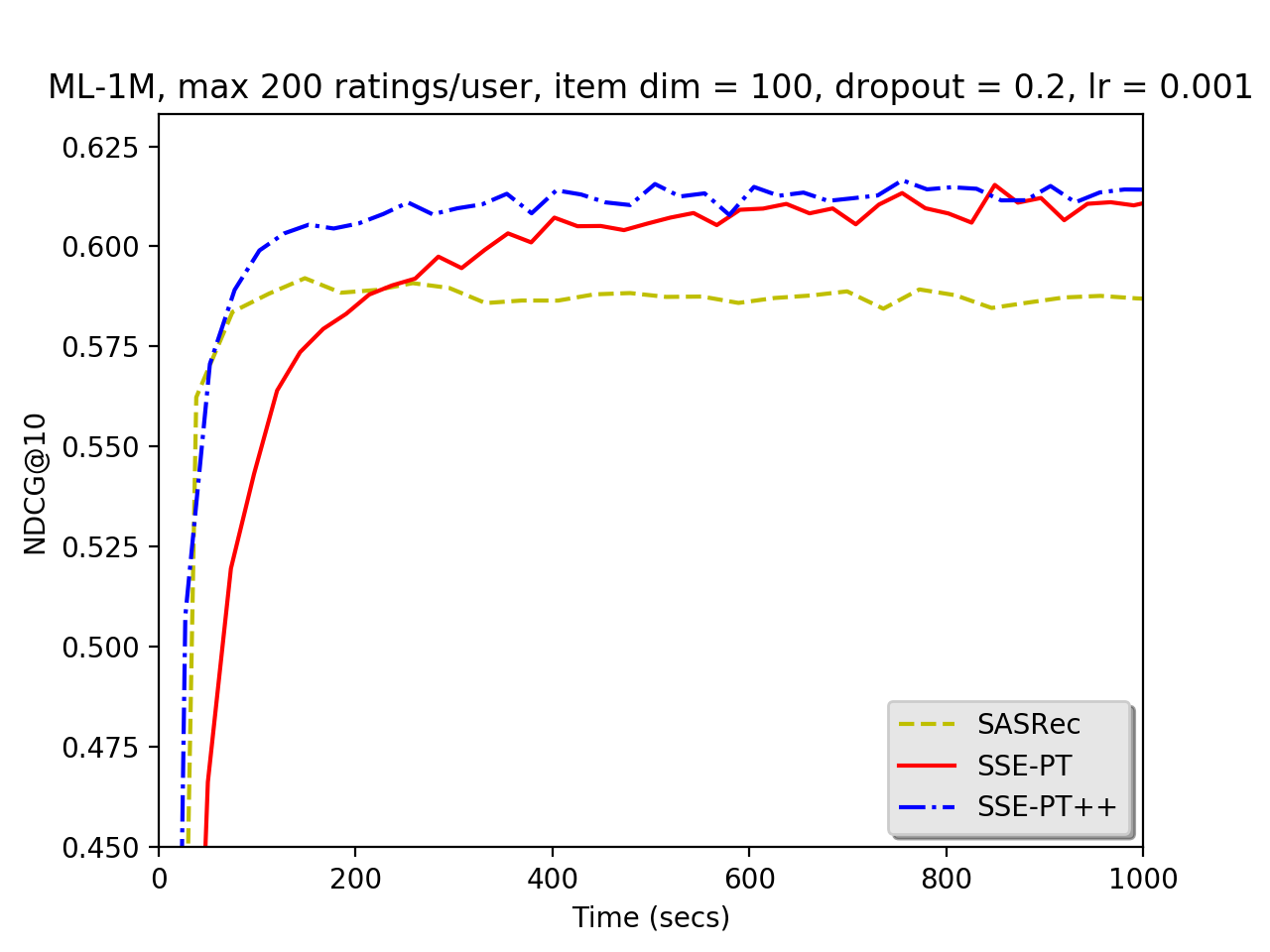Temporal Collaborative Ranking Via Personalized Transformer
The collaborative ranking problem has been an important open research question as most recommendation problems can be naturally formulated as ranking problems. While much of collaborative ranking methodology assumes static ranking data, the importance of temporal information to improving ranking performance is increasingly apparent. Recent advances in deep learning, especially the discovery of various attention mechanisms and newer architectures in addition to widely used RNN and CNN in natural language processing, have allowed us to make better use of the temporal ordering of items that each user has engaged with. In particular, the SASRec model, inspired by the popular Transformer model in natural languages processing, has achieved state-of-art results in the temporal collaborative ranking problem and enjoyed more than 10x speed-up when compared to earlier CNN/RNN-based methods. However, SASRec is inherently an un-personalized model and does not include personalized user embeddings. To overcome this limitation, we propose a Personalized Transformer (SSE-PT) model, outperforming SASRec by almost 5% in terms of NDCG@10 on 5 real-world datasets. Furthermore, after examining some random users' engagement history and corresponding attention heat maps used during the inference stage, we find our model is not only more interpretable but also able to focus on recent engagement patterns for each user. Moreover, our SSE-PT model with a slight modification, which we call SSE-PT++, can handle extremely long sequences and outperform SASRec in ranking results with comparable training speed, striking a balance between performance and speed requirements. Code and data are open sourced at https://github.com/wuliwei9278/SSE-PT.
PDF Abstract

 MovieLens
MovieLens